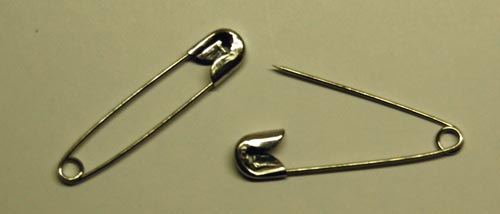Our kitchen light fixture started to char its plastic housing, so we went and bought a new China-made one, equipped with two concentric fluorescent lamps like its predecessor. It was only later, after much climbing ladders and drilling holes overhead, that the problem appeared: try as we might, fitting the two lamps seemed impossible to do. Then it became clear that it actually was impossible!

The fixture had three equidistant radial arms to place the lamps on, and these each had metal protrusions to locate the neon rings in position. The problem was, no matter how we pushed and bent, the smaller ring would simply not fit – its diameter was wrong. Note that the two lamps came in the same fitted cardboard box with the fixture, right from the manufacturer!
At first we were so upset we decided to replace the contraption; but it then struck me that as it hangs there with off-center skewed rings it does have a retro charm reminiscent of the Googie style (think Jetsons or retro Sci Fi ray gun designs). So for now, the lamp stays. Still it does boggle the mind that they’d sell a lamp that can’t be assembled, as if by design.
One day the ladies in the household decided they’ve had it with our handheld hairdryer, which was indeed weak and ailing. So I went to buy a new one, and decided to follow my first principle for tool acquisition: always buy the most professional, high-quality tool you can afford – it will repay the expense many times over!
I asked the appliance store guy for his best tool, and he offered me a sturdy blue unit that, he said, was what professional hairdressers (sorry, hair styling artists) use. The wattage on the label was indeed higher than any I’ve seen before. I brought it home proudly, only to discover the next day that it was no good to anyone there.
This was a new one for me: how can a tool that professionals prefer be useless to an amateur? In my world of engineering and DIY projects, this would be unthinkable. What difference can it make? A hairdryer is a hairdryer, after all.
Here’s the difference: the hairdryer is a hairdryer, but the hairdresser uses it to dry hair that is on someone else’s head! When you dry your own hair, the dryer must be short enough to fit between your hand and your skull; when you dry someone else you can just step back. The professional tool was longer, not much but just enough to make it awkward to use on oneself.
So, a lesson: always keep an open mind and challenge your own assumptions on the way a design fits its intended use. These errors seem obvious in retrospect – always in retrospect…
And now, from the murky past, a serious lapse in designing for the intended user…
When my son was a toddler, many years ago, he had this habit of going into my den in my absence, climbing onto the lab bench and wreaking havoc (here, I once captured him on film reaching for a hammer).
Well, I had to protect kid and gear, and I had this idea to build an anti-toddler alarm system that would raise an alert if the kid went into the den without an accompanying adult. My design had two infrared beams crossing the door at different heights, and a control box complete with a cackle generator (to issue a sound like an angry hen when the alarm was triggered). When it was finished, I painstakingly built four lens assemblies for the IR beams, rigged them around the door frame, and prepared to have some fun. Cool, huh?…
Yah. The thing lasted for less than a day. As soon as the kid (did I say he’s very smart?) went on the prowl he spied the interesting new things on the door frame, decided they were worth studying, and tore them off the door to facilitate examination. I wasn’t in the mood to devise hardened housings, so that was the end of the project.
We tend to think of User-centered design as making life easy for the user. Evidently, you also have to ensure the system can survive its intended users!
We humans have this obsession with designing new products, even though many of them die out after a while (some, mercifully, after a very short while!) However, every so often a design is found that is simply so good and sensible that it stays around for a long, long time.
So, here’s an example I ran into in the archaeological museum in Agrigento, Sicily, a town founded by the ancient Greeks.

The object on the left is a bronze Fibula, made in the 13th century BC. Not one in a thousand people today would recognize the word “Fibula”, but hardly anyone would fail to identify this as a large safety pin. In fact, I saw not one but many of these, in various museums in Europe: they were widely used for many centuries. The second photo shows one from the 8th Century BC, with a more imaginative design (remember, unlike our safety pins these were also meant for decorative effect as fasteners for cloaks and such).
And for all our digital innovations, and perhaps unlike many of them, I doubt this good ol’ design is going to be supplanted anytime soon…





